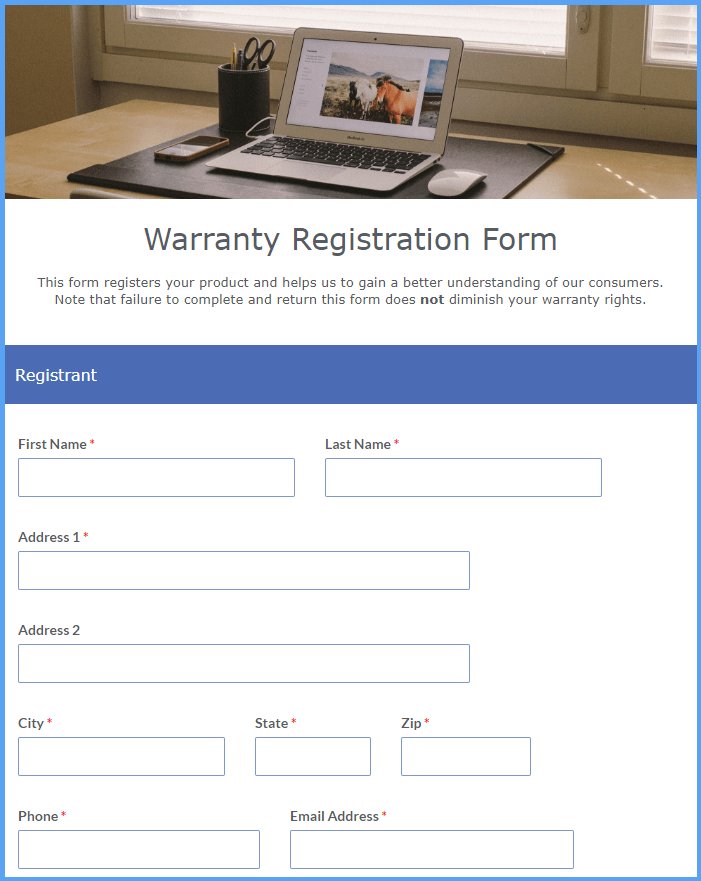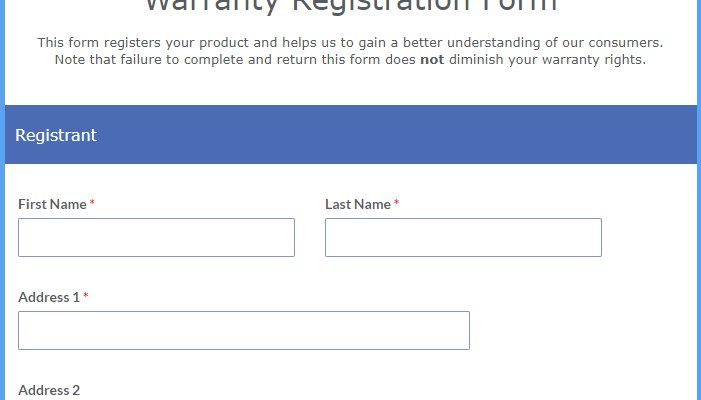
Honestly, dealing with appliance warranties can feel like wading through a forest with a dim flashlight. There are forms, codes, serial numbers, and all kinds of fine print. It’s easy to lose track of what matters. But don’t worry—let’s break down exactly how Kenmore’s water heater warranty works, why registration exists, and whether it’s truly required to start a claim. I’ll walk you through it all, one step at a time.
What Does Warranty Registration for Kenmore Water Heaters Actually Mean?
Let me explain: when you buy something big like a Kenmore water heater, you’ll often see a little card or website link inviting you to “register your product.” This is the warranty registration. It’s basically a way for the manufacturer to know who owns the product, where it lives, and when it was sold. Think of it as filling out a guestbook at a wedding—except, in this case, you’re signing up for service rather than cake.
Warranty registration isn’t the same as the warranty itself. The warranty comes with your water heater automatically—it’s built into the purchase, whether you bought it at Sears, Lowe’s, or another dealer. The registration step is optional (but sometimes recommended), and just lets Kenmore’s system keep tabs on your purchase. This extra layer can make things easier if you ever need support, but it’s not always required by law or policy.
Now, some brands make a big show of insisting you register within 30 or 60 days to avoid “losing coverage.” But most of the time, especially with established brands like Kenmore, your legal rights aren’t erased just because you forgot to send in a postcard. Let’s get into why.
Is Warranty Registration Required To Make a Kenmore Water Heater Claim?
Here’s the thing—your Kenmore water heater warranty is valid the second you buy the unit, whether you register it or not. Registration is not legally required to make a claim, but it can make the process a bit smoother. The most important piece, when it comes to claims, is usually your original proof of purchase: that’s your receipt showing the date you bought the water heater.
If you call Kenmore support or a service center about a warranty issue and haven’t registered, they’ll just ask for your purchase info and the model/serial number. That’s because the warranty really “starts ticking” from your purchase date—not whenever you remember to fill out a registration card. Registration is more for your convenience, making it easier for Kenmore to find your details quickly.
If the idea of warranty registration gives you flashbacks to frustrating tech support calls, don’t stress—lack of registration won’t block your access to warranty service, as long as you have your receipt.
How the Kenmore Water Heater Warranty Claim Process Works
You might be wondering what actually happens if your Kenmore water heater stops working and you want to file a warranty claim. It’s surprisingly straightforward—registration or no registration.
- Start by finding your proof of purchase. This is usually the very first thing Kenmore or your installer will ask for. If you can’t find your receipt, things get trickier, but not impossible. Sometimes a bank statement or store look-up can help you out.
- Locate the serial and model number on the unit. There’s typically a sticker or plate on the tank itself with a mix of letters and numbers. Snap a photo or jot it down—you’ll need it during troubleshooting or if you’re asked for the code.
- Contact Kenmore customer service, the dealer, or a local authorized repair center. Tell them what’s wrong—maybe it won’t heat, it’s leaking, or something else is off. They’ll walk you through basic troubleshooting steps, like a reset or battery test if your model uses electronic controls.
- Follow their instructions carefully. If a repair is needed and your unit’s in-warranty, they’ll set up service, order parts, or advise you on the next step. If you registered your product, they might pull up your info right away, but if not, they’ll just ask for those purchase details.
For most Kenmore water heater claims, the process is built around the date you bought the unit—not the date you registered it. Registration just speeds up the lookup.
The Pros and Cons of Registering Your Kenmore Water Heater
Let’s be honest—warranty registration can feel pointless, like those assembly instructions you toss aside and only dig out later. But it does have its upsides.
Benefits of registration:
- Makes future warranty claims a bit faster and less stressful
- Saves your info in Kenmore’s system, so you’re not scrambling for serial numbers during troubleshooting
- Sometimes unlocks access to recall notifications, safety updates, or extra troubleshooting tips
- May help if you lose your purchase receipt—some brands are flexible if you registered right away
But here’s the catch: registration is still optional. The most important thing is saving that original purchase proof. If you didn’t register—or don’t remember if you did—you’re not out of luck. Your legal rights to warranty coverage are still protected. Registration is just one of those little “nice-to-have” steps that might make life a bit easier down the road.
Common Problems People Face with Kenmore Water Heater Warranty Claims
If you’ve ever tried to make a warranty claim on any appliance, you know it’s rarely as simple as “call and get a fix.” Kenmore water heater owners sometimes hit snags—let’s talk through the most common ones.
- Missing the purchase receipt: This is the big one. If you can’t prove when you bought the water heater, Kenmore might use the manufacturing date (based on the serial number), which could shorten your coverage period. Always tuck your receipt somewhere safe.
- Unclear warranty terms: Not every Kenmore water heater has the same warranty coverage. Some have a 6-year tank warranty, others 10 or 12 years; parts might only be covered for 1 year. If you don’t have the documentation, you might need to look it up by model or code.
- Delays in getting service: Sometimes, even after you sync up all your info and file a claim, there can be delays while waiting for parts or a technician to visit. This isn’t usually about registration, just supply chain realities or local service schedules.
- Lack of registration confusion: Occasionally, a customer service rep might ask, “Did you register your water heater?” If you say no, it just means they’ll collect a bit more info—not that your claim is denied.
Don’t let lack of registration stress you out. Focus on finding that receipt and recording your model/serial number; that’s what truly matters for warranty troubleshooting.
Comparing Kenmore with Other Brands: Does Registration Matter More Somewhere Else?
You might be curious how Kenmore stacks up next to other big water heater brands when it comes to warranty registration requirements. Honestly, most major manufacturers operate pretty similarly, but there are some differences at the edges.
For example, brands like Rheem, AO Smith, or Bradford White all offer manufacturer warranties that activate on your purchase date, not your registration date. Like Kenmore, they recommend registering for easier support or future notifications, but don’t deny service if you skip it. On the flip side, a few specialty brands have started requiring online registration within 30–90 days for “extended coverage” or bonus perks—but even then, the basic warranty almost always remains intact if you have proof of purchase.
So, if you’re comparing options or thinking about a universal vs. brand-specific replacement part or remote, the takeaway is the same: save your receipt, jot down your model/serial, and only stress about registration if the paperwork specifically demands it for extra coverage.
Best Practices: Keeping Your Kenmore Water Heater Warranty Hassle-Free
Staying organized is your best defense against future headaches with any appliance warranty claim—Kenmore or otherwise.
- File that receipt! Scan it, take a photo, or tape it in your manual. Future-you will thank you.
- Record the model and serial number. Keep this info somewhere easy to find, either digitally or in a safe spot near the water heater.
- Consider registering, but don’t panic if you forget. It’s optional for Kenmore water heaters, but can smooth out support calls or help with safety alerts and recalls.
- Bookmark troubleshooting guides for your specific model. Sometimes, a quick reset, battery swap, or code lookup solves the problem faster than a call to support.
If you upgrade, move, or sell your Kenmore water heater, pass this info to the next owner. Warranty claims are typically tied to the original purchase, but having these details handy helps everyone.
Wrapping Up: Does Registration Really Matter for Kenmore Water Heater Claims?
In the end, here’s what really counts: Kenmore water heater warranty registration is not required to make a claim. The original proof of purchase is your golden ticket. Registration is just a bonus—it can speed things up and make support easier, but your warranty rights don’t disappear if you skip it.
So, if you’re standing in a chilly basement, receipt in hand, don’t let missing registration forms hold you back. Focus on what you can control: keeping your documents safe, knowing your model and serial number, and following Kenmore’s troubleshooting steps. With a little bit of organization, your warranty coverage will be there when you need it—no matter how many forms you did (or didn’t) fill out.
